dreamt is a formulation developed by Carolina Vazquez Mitchell to address sleep challenges. Mitchell's interest in sleep aids stemmed from her own experiences with sleep problems during her PhD studies at USC. Driven by a preference for natural approaches, she investigated the potential of cannabinoids and other compounds for sleep improvement.
Mitchell's research led her to explore the existing literature on cannabis and sleep. While some studies suggested that cannabis could induce sleep and increase deep sleep (delta wave activity), she noted concerns about its potential impact on REM sleep, a crucial stage for cognitive function and memory consolidation (Murillo-Rodríguez et al., 2017). This observation prompted her to develop a formulation that combined cannabinoids with other compounds, such as valerian root, GABA, and L-theanine, aiming to promote a more balanced and restorative sleep experience.
Since its launch in December 2019, dreamt has expanded to include various delivery methods. The formulations are designed to address common sleep issues, with ingredients working synergistically. Each dreamt product contains THC, CBD, and CBN, although the specific ratios and additional compounds may vary depending on the product format and regulatory requirements.
dreamt's formulas aim to address a range of sleep problems, with ingredients carefully selected for their potential synergistic effects.
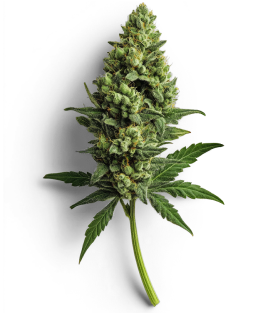
Tetrahydrocannabinol (THC) is a cannabinoid known for its psychoactive properties. It interacts with the endocannabinoid system, particularly CB1 receptors, which are involved in various physiological processes, including sleep regulation (NIDA, 2020). While THC's effects on sleep architecture are complex and not fully understood, some research suggests it can influence sleep stages (Murillo-Rodríguez et al., 2017).

Cannabidiol (CBD) is a non-psychoactive compound found in cannabis. While CBD alone has been shown to have wake-promoting effects (Murillo-Rodríguez et al., 2008), its interaction with THC is complex. Some research suggests that CBD can modulate the effects of THC (Solowij et al., 2019).

Valerian root has a long history of traditional use for anxiety and insomnia. It interacts with the GABA system, although the precise mechanisms are still under investigation. Valerian may influence sleep quality by affecting GABA levels or its activity (Diaper et al., 2004; Donath, 1996).
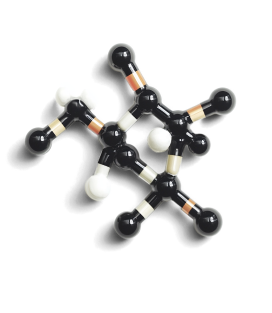
Gamma-aminobutyric acid (GABA) is a neurotransmitter that plays a role in regulating neuronal excitability. It is involved in the sleep-wake cycle, helping to promote relaxation and reduce anxiety (Abdou et al., 2006).
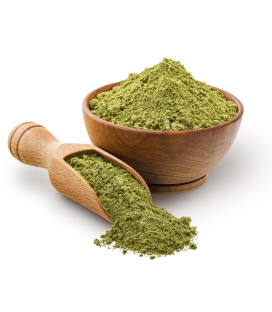
L-theanine, an amino acid found in green tea, has been studied for its potential relaxing effects. Some research suggests that L-theanine can improve sleep quality and duration, particularly when combined with GABA (Kim et al., 2019).

It is important to note that while some terpenes have shown promise in preclinical and early clinical research, more rigorous studies are needed to fully understand their therapeutic potential for sleep.
- Abdou, A. M., et al. (2006). Relaxation and immunity enhancement effects of γ‐Aminobutyric acid (GABA) administration in humans. Biofactors, 26(3), 201-208.
- Diaper, A., et al. (2004). A double‐blind, placebo‐controlled investigation of the effects of two doses of a valerian preparation on the sleep, cognitive and psychomotor function of sleep‐disturbed older adults. Phytotherapy research, 18(10), 831-836.
- Donath, F. (1996). A study to investigate the effect of valerian extract (Li 156) on the pharmaco-EEG in healthy male subjects (n=16). Lichtwer Pharma GmbH.
- Kim, S., et al. (2019). GABA and l-theanine mixture decreases sleep latency and improves NREM sleep. Pharmaceutical biology, 57(1), 64-72.
- Murillo-Rodríguez, E., et al. (2008). The nonpsychoactive Cannabis constituent cannabidiol is a wake-inducing agent. Behavioral neuroscience, 122(6), 1378.
- Murillo-Rodríguez, E., et al. (2017). Cannabidiol and sleep: a systematic review of preclinical and clinical studies. Sleep medicine reviews, 30, 1-14.
- NIDA. (2020, July 14). Cannabis (marijuana) drugfacts. National Institute on Drug Abuse. Solowij, N., et al. (2019). A randomised controlled trial of vaporised Δ 9-tetrahydrocannabinol and cannabidiol alone and in combination in frequent and infrequent cannabis users: acute intoxication effects. European archives of psychiatry and clinical neuroscience, 269(1), 17-35.
dreamt is a formulation developed by Carolina Vazquez Mitchell to address sleep challenges. Mitchell's interest in sleep aids stemmed from her own experiences with sleep problems during her PhD studies at USC. Driven by a preference for natural approaches, she investigated the potential of cannabinoids and other compounds for sleep improvement.
Mitchell's research led her to explore the existing literature on cannabis and sleep. While some studies suggested that cannabis could induce sleep and increase deep sleep (delta wave activity), she noted concerns about its potential impact on REM sleep, a crucial stage for cognitive function and memory consolidation (Murillo-Rodríguez et al., 2017). This observation prompted her to develop a formulation that combined cannabinoids with other compounds, such as valerian root, GABA, and L-theanine, aiming to promote a more balanced and restorative sleep experience.
Since its launch in December 2019, dreamt has expanded to include various delivery methods. The formulations are designed to address common sleep issues, with ingredients working synergistically. Each dreamt product contains THC, CBD, and CBN, although the specific ratios and additional compounds may vary depending on the product format and regulatory requirements.
dreamt ingredients explained
dreamt's formulas aim to address a range of sleep problems, with ingredients carefully selected for their potential synergistic effects.
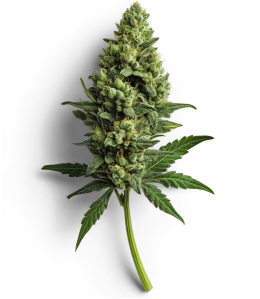
Tetrahydrocannabinol (THC) is a cannabinoid known for its psychoactive properties. It interacts with the endocannabinoid system, particularly CB1 receptors, which are involved in various physiological processes, including sleep regulation (NIDA, 2020). While THC's effects on sleep architecture are complex and not fully understood, some research suggests it can influence sleep stages (Murillo-Rodríguez et al., 2017).

Cannabidiol (CBD) is a non-psychoactive compound found in cannabis. While CBD alone has been shown to have wake-promoting effects (Murillo-Rodríguez et al., 2008), its interaction with THC is complex. Some research suggests that CBD can modulate the effects of THC (Solowij et al., 2019).

Valerian root has a long history of traditional use for anxiety and insomnia. It interacts with the GABA system, although the precise mechanisms are still under investigation. Valerian may influence sleep quality by affecting GABA levels or its activity (Diaper et al., 2004; Donath, 1996).
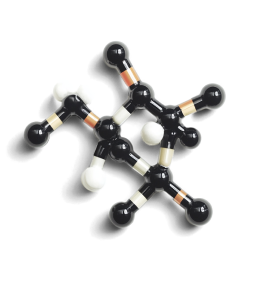
Gamma-aminobutyric acid (GABA) is a neurotransmitter that plays a role in regulating neuronal excitability. It is involved in the sleep-wake cycle, helping to promote relaxation and reduce anxiety (Abdou et al., 2006).

L-theanine, an amino acid found in green tea, has been studied for its potential relaxing effects. Some research suggests that L-theanine can improve sleep quality and duration, particularly when combined with GABA (Kim et al., 2019).

It is important to note that while some terpenes have shown promise in preclinical and early clinical research, more rigorous studies are needed to fully understand their therapeutic potential for sleep.
- Abdou, A. M., et al. (2006). Relaxation and immunity enhancement effects of γ‐Aminobutyric acid (GABA) administration in humans. Biofactors, 26(3), 201-208.
- Diaper, A., et al. (2004). A double‐blind, placebo‐controlled investigation of the effects of two doses of a valerian preparation on the sleep, cognitive and psychomotor function of sleep‐disturbed older adults. Phytotherapy research, 18(10), 831-836.
- Donath, F. (1996). A study to investigate the effect of valerian extract (Li 156) on the pharmaco-EEG in healthy male subjects (n=16). Lichtwer Pharma GmbH.
- Kim, S., et al. (2019). GABA and l-theanine mixture decreases sleep latency and improves NREM sleep. Pharmaceutical biology, 57(1), 64-72.
- Murillo-Rodríguez, E., et al. (2008). The nonpsychoactive Cannabis constituent cannabidiol is a wake-inducing agent. Behavioral neuroscience, 122(6), 1378.
- Murillo-Rodríguez, E., et al. (2017). Cannabidiol and sleep: a systematic review of preclinical and clinical studies. Sleep medicine reviews, 30, 1-14.
- NIDA. (2020, July 14). Cannabis (marijuana) drugfacts. National Institute on Drug Abuse. Solowij, N., et al. (2019). A randomised controlled trial of vaporised Δ 9-tetrahydrocannabinol and cannabidiol alone and in combination in frequent and infrequent cannabis users: acute intoxication effects. European archives of psychiatry and clinical neuroscience, 269(1), 17-35.

dreamt is a formulation developed by Carolina Vazquez Mitchell to address sleep challenges. Mitchell's interest in sleep aids stemmed from her own experiences with sleep problems during her PhD studies at USC. Driven by a preference for natural approaches, she investigated the potential of cannabinoids and other compounds for sleep improvement.
Mitchell's research led her to explore the existing literature on cannabis and sleep. While some studies suggested that cannabis could induce sleep and increase deep sleep (delta wave activity), she noted concerns about its potential impact on REM sleep, a crucial stage for cognitive function and memory consolidation (Murillo-Rodríguez et al., 2017). This observation prompted her to develop a formulation that combined cannabinoids with other compounds, such as valerian root, GABA, and L-theanine, aiming to promote a more balanced and restorative sleep experience.
Since its launch in December 2019, dreamt has expanded to include various delivery methods. The formulations are designed to address common sleep issues, with ingredients working synergistically. Each dreamt product contains THC, CBD, and CBN, although the specific ratios and additional compounds may vary depending on the product format and regulatory requirements.
dreamt's formulas aim to address a range of sleep problems, with ingredients carefully selected for their potential synergistic effects.
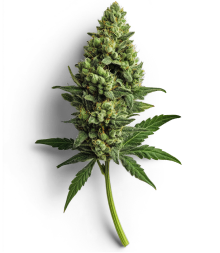
Tetrahydrocannabinol (THC) is a cannabinoid known for its psychoactive properties. It interacts with the endocannabinoid system, particularly CB1 receptors, which are involved in various physiological processes, including sleep regulation (NIDA, 2020). While THC's effects on sleep architecture are complex and not fully understood, some research suggests it can influence sleep stages (Murillo-Rodríguez et al., 2017).

Cannabidiol (CBD) is a non-psychoactive compound found in cannabis. While CBD alone has been shown to have wake-promoting effects (Murillo-Rodríguez et al., 2008), its interaction with THC is complex. Some research suggests that CBD can modulate the effects of THC (Solowij et al., 2019).
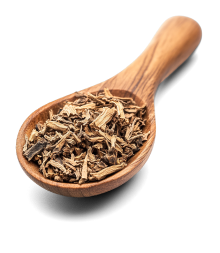
Valerian root has a long history of traditional use for anxiety and insomnia. It interacts with the GABA system, although the precise mechanisms are still under investigation. Valerian may influence sleep quality by affecting GABA levels or its activity (Diaper et al., 2004; Donath, 1996).
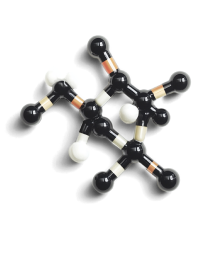
Gamma-aminobutyric acid (GABA) is a neurotransmitter that plays a role in regulating neuronal excitability. It is involved in the sleep-wake cycle, helping to promote relaxation and reduce anxiety (Abdou et al., 2006).

L-theanine, an amino acid found in green tea, has been studied for its potential relaxing effects. Some research suggests that L-theanine can improve sleep quality and duration, particularly when combined with GABA (Kim et al., 2019).

It is important to note that while some terpenes have shown promise in preclinical and early clinical research, more rigorous studies are needed to fully understand their therapeutic potential for sleep.
- Abdou, A. M., et al. (2006). Relaxation and immunity enhancement effects of γ‐Aminobutyric acid (GABA) administration in humans. Biofactors, 26(3), 201-208.
- Diaper, A., et al. (2004). A double‐blind, placebo‐controlled investigation of the effects of two doses of a valerian preparation on the sleep, cognitive and psychomotor function of sleep‐disturbed older adults. Phytotherapy research, 18(10), 831-836.
- Donath, F. (1996). A study to investigate the effect of valerian extract (Li 156) on the pharmaco-EEG in healthy male subjects (n=16). Lichtwer Pharma GmbH.
- Kim, S., et al. (2019). GABA and l-theanine mixture decreases sleep latency and improves NREM sleep. Pharmaceutical biology, 57(1), 64-72.
- Murillo-Rodríguez, E., et al. (2008). The nonpsychoactive Cannabis constituent cannabidiol is a wake-inducing agent. Behavioral neuroscience, 122(6), 1378.
- Murillo-Rodríguez, E., et al. (2017). Cannabidiol and sleep: a systematic review of preclinical and clinical studies. Sleep medicine reviews, 30, 1-14.
- NIDA. (2020, July 14). Cannabis (marijuana) drugfacts. National Institute on Drug Abuse. Solowij, N., et al. (2019). A randomised controlled trial of vaporised Δ 9-tetrahydrocannabinol and cannabidiol alone and in combination in frequent and infrequent cannabis users: acute intoxication effects. European archives of psychiatry and clinical neuroscience, 269(1), 17-35.
